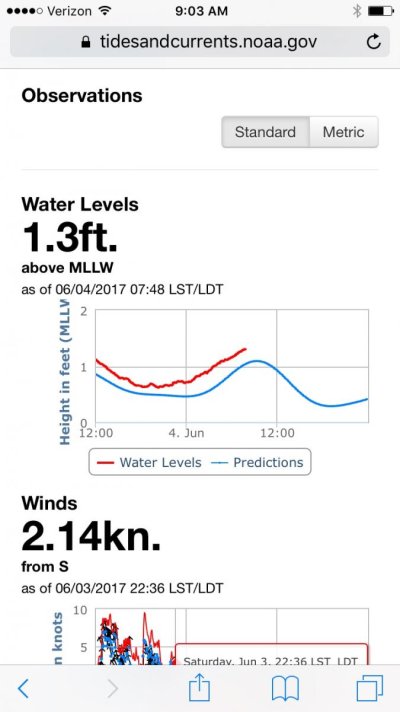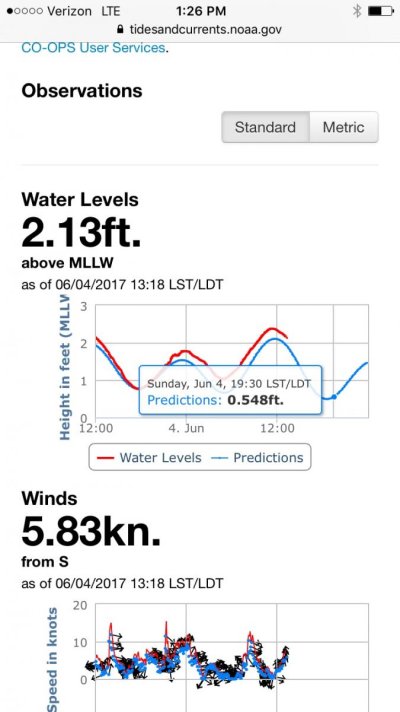All,
I need to get to the next level in understanding tides, predictions and forecasts.
I use the following two sites for info:
Tide/Current Predictor
and
https://tidesandcurrents.noaa.gov/map/
They both give very similar info, and they are both predictions. As I understand it, predictions are made a year in advance and updated every six months.
While the predictions are fairly close, they don't take local conditions into consideration. Like weather fronts, highs and lows, winds, etc. Occasionally the predictions are way off with extreme highs and lows and predictions off a foot or two.
How can one adjust for the differences for more accurate forecasts?
I need to get to the next level in understanding tides, predictions and forecasts.
I use the following two sites for info:
Tide/Current Predictor
and
https://tidesandcurrents.noaa.gov/map/
They both give very similar info, and they are both predictions. As I understand it, predictions are made a year in advance and updated every six months.
While the predictions are fairly close, they don't take local conditions into consideration. Like weather fronts, highs and lows, winds, etc. Occasionally the predictions are way off with extreme highs and lows and predictions off a foot or two.
How can one adjust for the differences for more accurate forecasts?


